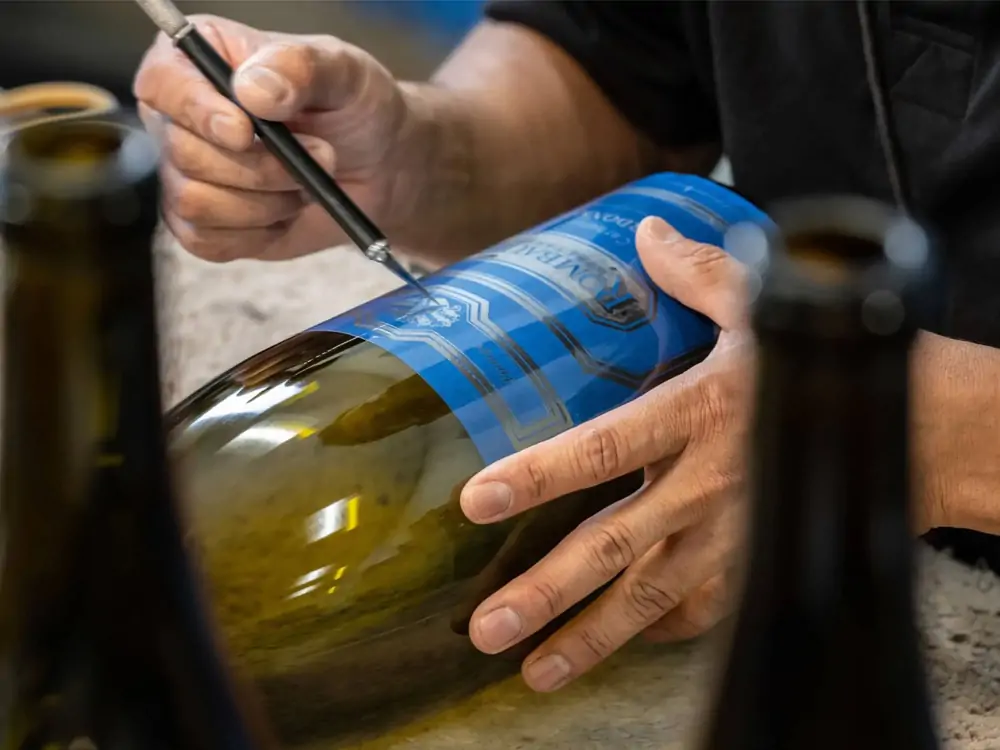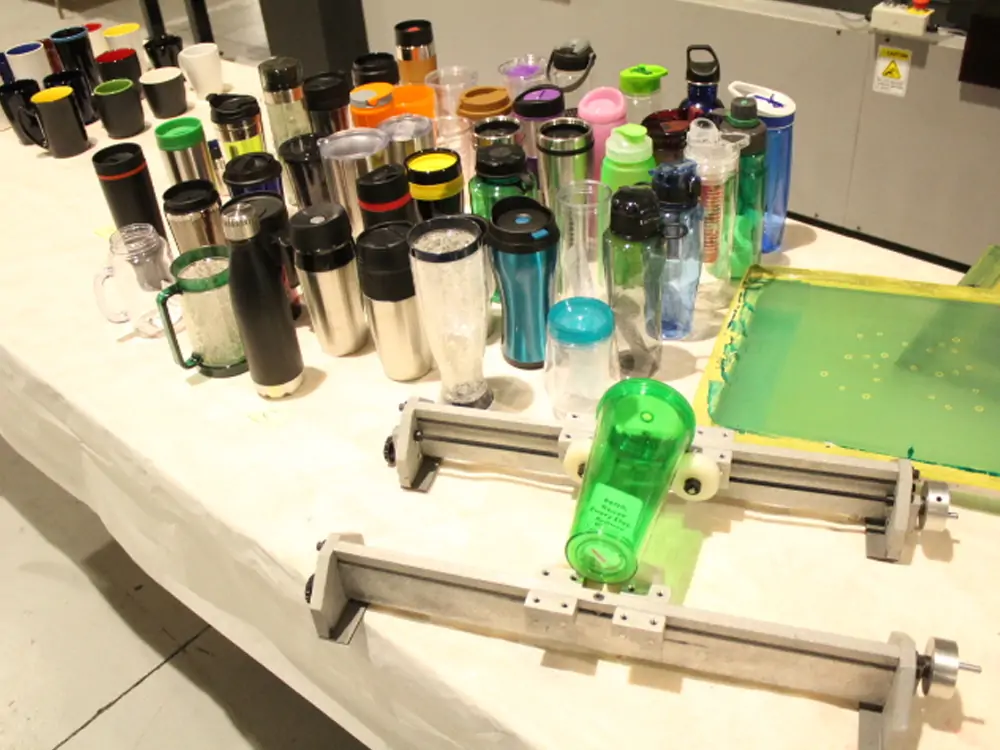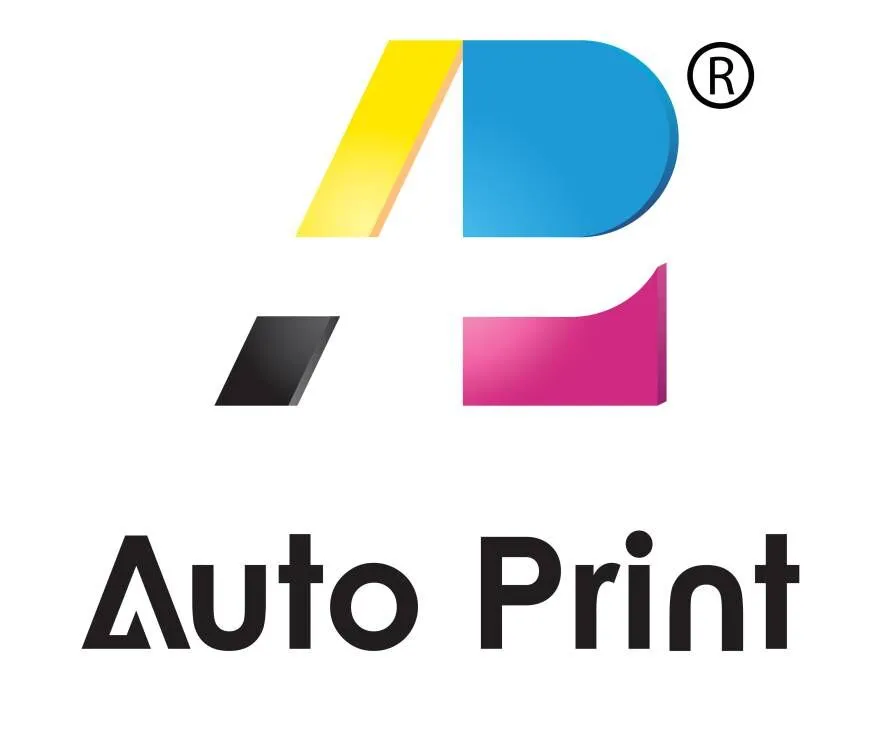Printing on glass bottles improves the uses and value of the material, enhancing appearance and functionality. Glass is flat, transparent, and relatively easy to clean. A printed glass bottle can serve many purposes depending on its size and shape, from interior decoration to carrying drinking water to the office.
How can you print a glass bottle? There are several techniques and options for printing on glass bottles. The main ones are screen and digital printing. In this article, we will focus on silkscreen on glass bottles.
Screen Printing on Glass Bottles – How is it done?
Technically, screen printing on glass bottles is quite demanding. You must be attentive to minor details to achieve your desired results. These are the steps to take when screen printing glass bottles.
Design
Firstly, create the design you need to print using your preferred design program. Ensure you have the correct dimensions of the material for the best results. Try creating a simple design with few fine details. Use as few colors as possible. Identify the color your client identifies with the most, and use it when working on the design. Screen printing requires simple color designs. They improve the outcome of your print. Secondly, print the design on a transparent acetate film. This is the material you use to create the stencil.
Screen
Prepare the screen for your project. You need to identify the correct screen mesh for your printing depending on the design and thickness of your glass bottle. The surface texture is also important when deciding the suitable type of mesh. Coat the mesh screen with a light-reactive emulsion, which hardens when exposed to light. To achieve the best results, ensure the coating is even and consistent in thickness.
Expose the Emulsion
Place the clear acetate film containing the image on the coated mesh screen. As light hardens the emulsion, all areas covered with your image remain liquid. The exposure time depends on the thickness of your emulsion, the light intensity of your exposure machine, and the size of your screen board. If your image contains more than one color, you will need a different screen for each color, aligned precisely by hand.
Stencil
Exposing the emulsion hardens all the areas on the screen that do not have images. After the exposure, immerse the screen in water at room temperature for about 60 seconds. Rinse out the screen and carefully wash away any emulsion that did not harden. This leaves a clear imprint of your image for the ink to pass through.
Once the screen mesh dries up, you can adjust where necessary to ensure your stencil is as close to the original design.
The Ink/ Getting Your Glass Bottle Ready for Print
Once your stencil is ready, prepare the ink according to your original design and your glass bottle for print. Mount the mesh screen on the printing press and the glass bottle underneath it.
Press the Ink through the Screen onto the Glass Bottle
Add ink to the top end of the screen board, and use a squeegee to spread it evenly on the screen. This forces the ink through the exposed areas of the stencil, impressing the image on the glass bottle underneath. You can lift the screen board and place another bottle beneath it if you have multiple glass bottles to print. Repeat the procedure until you have finished printing.
You can repurpose the mesh screen for another printing project by removing the emulsion using a cleaning agent.
Dry the Glass Bottle
After the above process is completed, dry the glass, which allows it to “heal” the ink to give your finished product a smooth colorfast surface. Inspect to ensure your work is clean before passing the glass bottles to the new owner.

Choosing the Right Ink for Glass Bottle Screen Printing
Screen printing on glass bottles requires ink, paint, or pigment that you push through the mesh screen onto the glass surface. However, to achieve the perfect outcome, you must pay closer attention when choosing the type of ink to use.
The ink market has several specialist types that affect the finished product differently. For instance, puff or texturized ink can create a unique appearance or feel. While at the type of ink, you must also consider the surface of your glass bottle.
The following are the common types of screen printing inks.
Water-based Ink
Water-based screen printing ink is best suited for fabric branding. Printers prefer this type of ink. Because it soaks on the fibers of the printed piece of clothing. Customers also love materials printed with water-based screen printing ink. Because it feels soft and easy to wash and iron. It is also important to note that water-based screen printing ink takes longer to dry than a printer.
Plastisol Ink
Plastisol screen printing ink is thicker and lasts a lot longer than the water-based type. It is versatile and creates a clear imprint of the screen-printed image.
Discharge Ink
Discharge screen printing ink requires a higher level of expertise to work with. This ink removes the material’s original color and replaces it with the one on your design. When printing silk screen glass bottles, you require ink that will not fade or wear out. The imprint should remain intact for as long as the printed glass bottles live.
For this reason, printers prefer the Plastisol screen printing ink for printed glass bottles printing. This ink is user-friendly and easy to match Pantone colors. Moreover, the ink features a higher viscosity that creates a thick imprint on the glass, thus increasing the opaqueness of the print. Additionally, the Plastisol type of screen printing ink allows you to define the thickness of the imprint depending on your preferred outcome.
Choosing the Right Screen Printing Machine for Glass Bottles
If you are in the printing industry and want to expand your scope to include screen printing on glass bottles, choosing a suitable machine is essential. The following are the basic principles of screen printing machines for glass bottles.
Flexibility
When buying a screen printing machine for glass bottles, it is essential to keep in mind that you will need to use it on other glass materials. Regarding flexibility, you require a versatile machine to print on various glass textures and shapes.
It is also essential to consider the machine’s installation process. Is it easy to install, or will you require the help of a technician? If you need a technician’s assistance, does the company you buy from offer free installation as an after-sale service?
Machine Size
You should consider a screen printing machine that fits your demands in terms of space and production requirements. Go for a machine that will fit your available space and produce in your preferred volumes.
User-friendliness
Some machines are pretty hectic when learning how to operate them. When buying a new machine, ensure you go for the one that is easy to use. Avoid a machine requiring you to hire new operators instead of utilizing the stuff you already have.
Buying and Operating Cost
Finally, always establish your budget on the fundamentals of the right screen printing machine for glass bottles. This includes the initial buying price and the operating cost of the machine. Establishing a budget will help determine which streets you visit when searching for a new screen printing machine for glass bottles.

Challenges of Screen Printing on Glass Bottles
Every printing operation has its challenges. The notable ones when printing on glass bottles include the following:
- Sticky prints occur due to improper or insufficient drying of the print. As such, ensuring your final product has sufficient time to dry is essential.
- Another challenge is print washing away from the glass bottle surface. This happens due to an improper curing process. Therefore, allowing the glass bottle enough curing time at the right temperature is essential.
- You can also experience the challenge of ink cracking or paint peeling off the glass bottle surface. These problems occur due to an incomplete curing process. As mentioned earlier, allowing the glass bottle enough curing time at the right temperature is essential.
In Conclusion
Screen printing on glass bottles is a versatile and highly fulfilling process. It allows you to create impressive prints on different sizes and shapes of glass bottles. Screen printing on glass bottles is ideal for massive orders since you can utilize one stencil for many bottles without messing up the quality.
The most crucial part is understanding the process and everything you need to make your printing on bottles project successful.
Ideally, the process involves creating a stencil on a mesh screen and pushing ink onto the glass bottle surface.
Hopefully, this guide educated you well on everything you need about the process.
